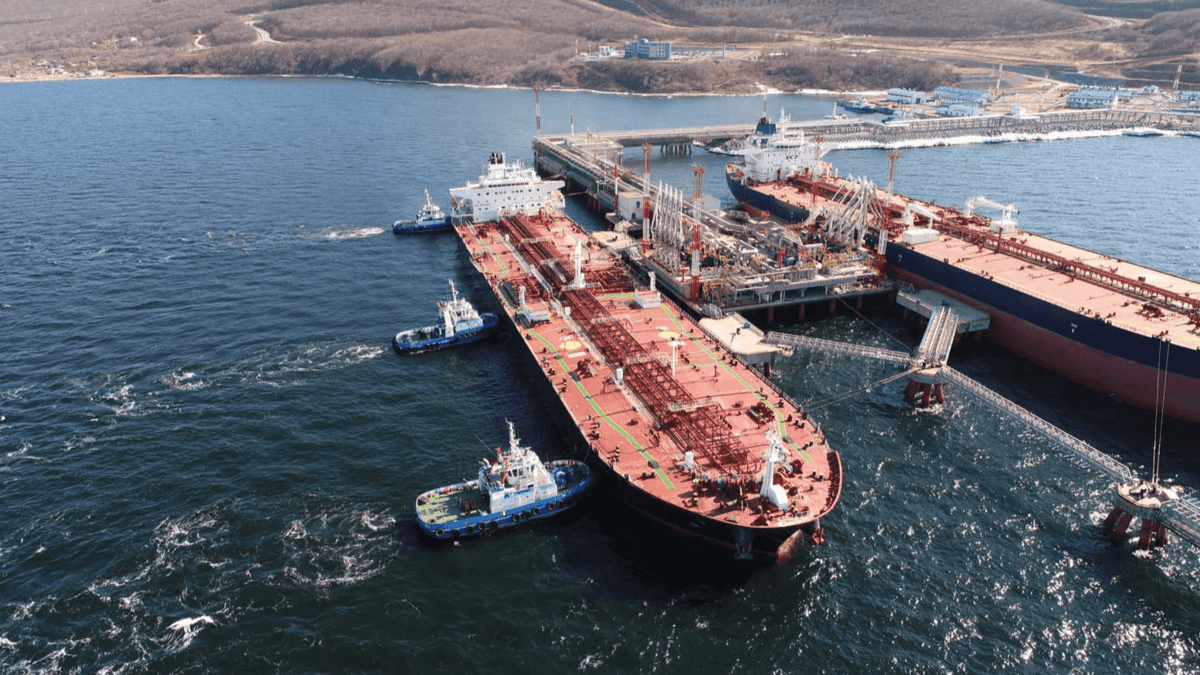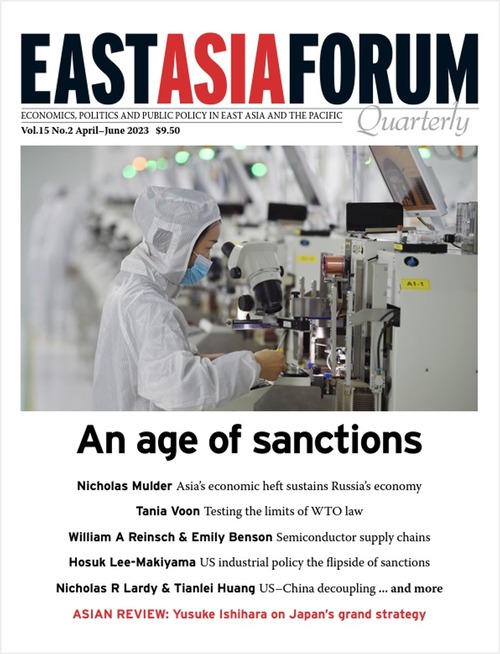Published 27 June 2023
One year after its imposition, it's become clear that the comprehensive sanctions campaign launched by the West and its allies has done little to halt Russia's aggression on Ukraine. Asia's growing commercial power is helping Russia to sustain its economy, as it diversifies its energy exports and other trade links to India, China, the Middle East, and Central Asia.
Thirty-seven countries have imposed economic sanctions on Russia since its invasion of Ukraine in February 2022. The breadth of this campaign has few precedents in recent history. The sanctions covering finance, energy, technology, travel, shipping, avionics and commodities are aimed at one of the ten largest world economies.
Yet the economic pressure on Moscow is by no means as hermetic as previous anti-war sanctions campaigns, such as the UN sanctions against Iraq after Saddam Hussein’s 1990 invasion of Kuwait.
One year after their imposition, several things are clear. Sanctions have damaged the Russian economy and its future growth prospects. But they have neither caused its collapse nor helped to end the war in Ukraine.
There’s been a lot of focus on how US dollar dominance facilitates Western financial sanctions. But the mixed results of the economic campaign against Russia demonstrate that a powerful countervailing trend has gone largely unnoticed: the rise of Asian commercial power as a facilitator of trade diversion that blunts Western sanctions.
Modern economic sanctions were created in the early 20th century at a time of undisputed European mastery of the world economy, a mantle subsequently passed to the United States. This Western economic dominance lay behind the expansion of sanctions during the Cold War period. But the global economic center of gravity has since moved towards the East.
In 2021 Asian economies constituted 39% of global nominal gross domestic product, making them the single largest continental bloc. Asian exports constituted 36% of global exports, while the five largest Asian economies together — China and Hong Kong, Japan, South Korea, Singapore, and India — accounted for a quarter of all global imports. Asia today constitutes three-quarters, and China and India fully half, of global year-on-year GDP growth.
The 2022 sanctions campaign against Russia has exposed the strategic consequences of this shift. Sanctions against Moscow were intended, as one US National Security Council official put it, as a form of economic ‘shock and awe’. Yet after a brief financial crisis, Russia rerouted much of its trade towards Asian economies and weathered the initial sanctions onslaught.
Asian economies have acted as alternative destinations for Russian exports as well as new sources of imports. Trade links with China, India, Turkey, Gulf states, and Central Asian countries have buoyed the Russian economy. Bilateral trade between Russia and China grew 29% in 2022 and 39% in the first quarter of 2023. It may reach US$237 billion by the end of 2023 — a sum larger than China’s total bilateral trade with economies such as Australia, Germany, or Vietnam. In 2022, Russian trade with the United Arab Emirates rose by 68% while trade with Turkey increased by 87%. Russo–Indian trade surged by 205% to US$40 billion.
Export diversion has been a lifesaver for Russian energy sales, which constitute a large share of its trade. In January 2022 European countries imported 1.3 million Russian barrels per day while Asian customers purchased 1.2 million. By January 2023 Russian sales to Europe had dropped below 100,000 barrels per day but exports to Asia had surged to 2.8 million.
Asian demand has more than substituted for the loss of oil exports to Europe. India has become the single largest purchaser of Russian seaborne crude, buying more than 1.4 million barrels per day since the beginning of 2023. Chinese importers are not far behind, buying between 800,000–1.2 million barrels per day in 2022. In one year, India, China, Turkey, and the Gulf states have entirely replaced European demand for Russian oil exports.
Asian exporters have also filled part of the gap left by Western suppliers of advanced manufacturing and high-tech equipment. Chinese firms now account for 40% of new car sales and 70% of smartphone sales in Russia. The withdrawal of Western foreign direct investment has severely impacted the domestic car industry. Russia has shifted to importing used European and Japanese cars through third countries, with new cars mainly coming from China.
China and Hong Kong have become key suppliers of microchips, which Russia began to stockpile before the war. In 2022, Russian companies shifted to importing more advanced chips, with the value of semiconductor and electronic circuit imports rising by 36% between January and September compared to 2021. It remains to be seen how effective these import channels will be in the long run. But in the short run, Western export controls on technology have not created a chip famine in Russia.
Russia’s trading partners in the Eurasian Economic Union have also played a role in bypassing technology export restrictions. Central Asian economies are active as conduits of parallel imports and transit trade. The European Bank for Reconstruction and Development concluded that while Russian trade with the United States, United Kingdom, and European Union has dropped significantly, ‘EU [and] UK exports to Armenia, Kazakhstan, and Kyrgyzstan… increased markedly’ in a pattern ‘consistent with [the] rerouting of trade to Russia’.
This rerouting effect through Central Asia is noticeable in imports of machines and chemical products. By October 2022 year-on-year increase in exports to Russia from China, Belarus, Turkey, Kazakhstan, Kyrgyzstan, and Armenia nearly equaled the fall in European, US, and UK exports to Russia.
By acting as ersatz suppliers to the Russian economy, as substantial new customers for its commodity sales, and as a price-setters for Russian oil exports on global markets, Asian economies have considerably reduced the impact of Western sanctions. While the sanctions have lowered Russia’s growth potential, its economy has been sustained by a major trade realignment. The participation of Japan, South Korea, Taiwan, and Singapore in financial and technology sanctions has had little effect, partly because commercial ties between these East Asian states and Russia continue in manufacturing and energy trade. Asia’s sanctions-blunting commercial power therefore rests primarily with China and India and several Middle Eastern and Central Asian economies. These geoeconomic realities seem bound to complicate the future Western use of sanctions.
© The Hinrich Foundation. See our website Terms and conditions for our copyright and reprint policy. All statements of fact and the views, conclusions and recommendations expressed in this publication are the sole responsibility of the author(s).










